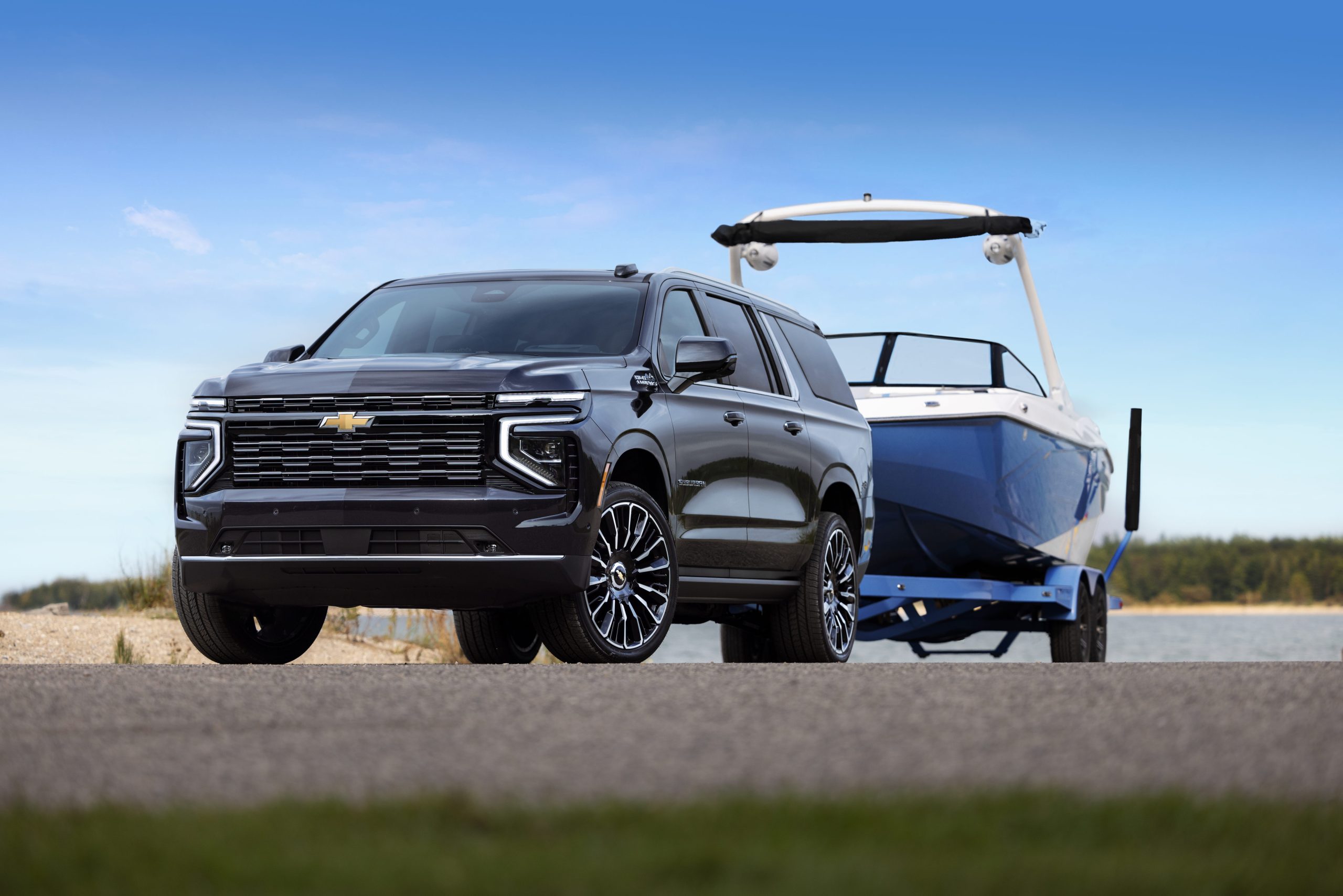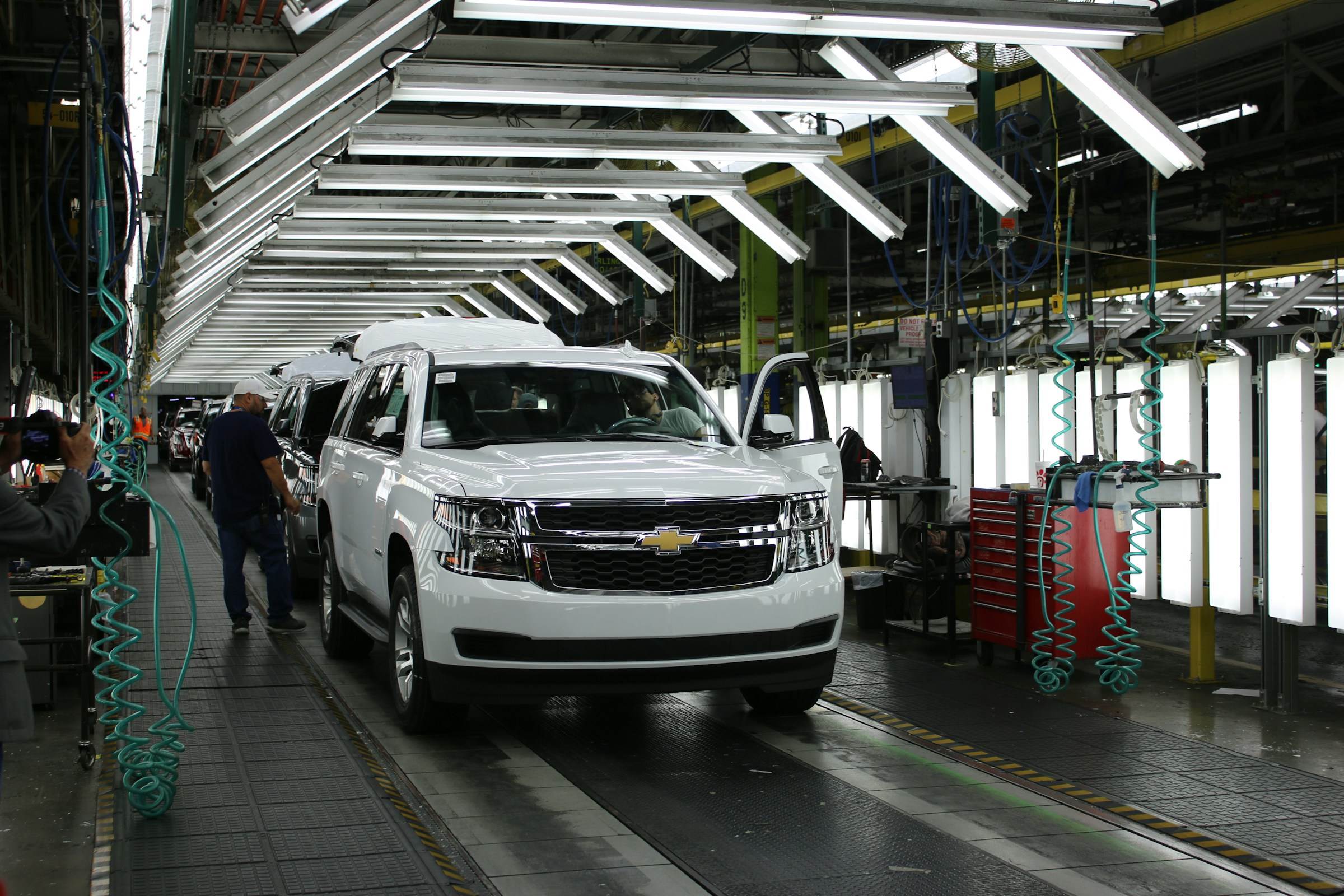Being one of the world’s largest SUVs, the Chevy Suburban has always been about no-compromise capability, like hauling big families, towing huge trailers, and eating up countless highway miles. But when you’re piloting a huge 5,700-pound SUV, minor impacts may become a real problem.

A low-speed parking lot collision can mean a $2,000 bumper replacement. Hit a deer at highway speed and you’re looking at major front-end repairs. Even something as simple as trail debris on a camping trip or road hazards can crack that expensive factory grille and damage the radiator behind it.
That’s where grille guards come in. They’re not just for ranchers and off-roaders. Plenty of suburban (lowercase ‘s’) owners are bolting them on for practical protection and that cool rugged look.
The grille guard market has grown way beyond the basic chrome tube bumpers your dad had on his ’90s pickup. Today you’ve got everything from sleek black powder-coated push bars to full wraparound ranch-style grille guards like these ones here that could stop a small tank. Get it right and you’ve got solid protection plus a rugged exterior upgrade without major drawbacks.
What Are Grille Guards?
Definition and Basic Function
At its core, a grille guard is exactly what it sounds like – a metal framework that mounts to the frame of your SUV to protect the front end from damage. Think of it as a bumper for your bumper. The design is simple: heavy-duty tubes or bars positioned a few inches in front of your grille, headlights, and bumper to absorb and deflect impacts before they reach the expensive stuff.
Originally developed for rural and commercial use (think police interceptors, ranch trucks, and vehicles that actually see wildlife on a regular basis) grille guards have evolved into both a functional protection device and a styling element. The better ones are engineered to take a hit from an animal strike or minor collision and transfer that energy to the frame rails rather than your plastic bumper cover and the cooling system hiding behind it. They won’t save you in a serious crash (that’s what crumple zones are for), but they’ll absolutely prevent the kind of damage that turns a minor incident into a multi-thousand-dollar insurance claim.
Common Materials
Walk into any truck accessories shop and you’ll see grille guards in a few distinct finishes, each with its own pros and cons.
- Steel (Usually Black Powder-Coated) is the most popular and affordable option, using heavy-gauge tubing with a durable textured finish that gives a tactical look and resists rust – though chipped coating can lead to corrosion in salt-prone areas, and quality varies wildly between cheap guards with thin tubing and premium units.
- Polished Stainless Steel is the premium option using corrosion-resistant 304-grade steel with a mirror finish that delivers a refined, traditional chrome look – though it costs up to double the price of powder-coated guards and requires regular polishing to maintain its shine.
- Chrome has basically fallen out of favor and you’ll almost never see it on modern grille guards. When you do find chrome options, they’re usually cheap overseas units with thin chrome plating that peels and pits within months. The ’90s called – they want their chrome bumpers back. Skip it.
Different Styles
Not all grille guards are created equal, and the style you choose depends on how much coverage you want and what look you’re going for.
- Push bars are the lightweight, budget-friendly option that protect only your center grille and radiator area – perfect for parking lot protection or light mounting, but they leave your headlights and fender edges completely exposed to impacts.
- Full grille guards wrap around your entire front end with side brush guards that protect headlights and fenders, offering maximum protection from deer strikes and trail damage while providing multiple mounting points for lights – though they’re heavier (80-150 lbs), pricier, and give your Suburban an aggressive ranch truck look.
How They Attach to the Suburban
This is where grille guards separate themselves from bolt-on cosmetic accessories – proper installation requires mounting directly to your frame. Most quality guards come with vehicle-specific brackets that bolt to existing holes in your Suburban’s frame rails, typically behind the bumper. You’re not just screwing something into plastic. Instead, you’re creating a solid connection to the chassis of your truck.
The installation process usually means removing your front bumper cover (or at least loosening it significantly) to access the frame mounting points. The guard’s brackets bolt through these points using specific hardware, and the guard itself then bolts to those brackets. Some systems are modular – the brackets stay on permanently and the guard can be removed if needed.
Installation Process
DIY vs. Professional Installation
Installing a grille guard is a manageable DIY job if you’ve got basic mechanical skills and a few hours – you’re just bolting metal to metal with vehicle-specific brackets, no welding or custom work required. That said, professional installation runs $150-300 and makes sense if you’ve never pulled a bumper cover before or don’t want to deal with the hassle, especially since some shops throw in free installation with purchase.
Tools and Time Requirements
Here’s what you actually need to get this done:
Required Tools:
- Socket set (metric and standard – usually 13mm, 15mm, 18mm are the common sizes)
- Ratchet with extensions – you’ll need to reach bolts in tight spaces
- Torque wrench (critical for proper installation)
- Jack and jack stands rated for your Suburban’s weight
- Trim removal tools or flathead screwdriver (for bumper clips)
- Penetrating oil (your frame bolts might be rusty)
- Blue Loctite (thread locker for the hardware)
Nice to Have:
- Impact wrench (makes life easier but not necessary)
- Creeper or cardboard to lie on
- Work light or headlamp
- Extra hands (seriously, get a buddy – these guards are heavy)
Time Investment: Plan on 2-4 hours for your first installation. The actual bolting takes maybe an hour once you’ve got everything figured out, but removing the bumper cover, cleaning mounting surfaces, aligning brackets, and test-fitting everything eats up time. Add another hour if you’re working alone or if your Suburban has been driven in the salt belt and every bolt is corroded. Professional installers knock it out in under an hour because they’ve done it a thousand times and aren’t stopping to check YouTube video guides.
Vehicle-specific Mounting Considerations for Different Suburban Generations
Not all Suburbans are created equal, and your grille guard needs to match your specific generation. Buying a “universal fit” guard is a recipe for frustration – nothing will line up right and you’ll be drilling custom holes or returning it.
- 2000-2014 (GMT800/GMT900): These generations offer straightforward installation with plenty of aftermarket support, though you’ll need to watch for rust on older trucks and verify sensor compatibility on 2007+ models that started incorporating parking sensors and cameras.
- 2015+ (GMT K2XX/T1XX): Modern Suburbans are packed with safety tech like radar cruise control, automatic braking, and multiple cameras, so you must verify your grille guard won’t block sensors or disable features – and warranty concerns become relevant on the newest trucks.
Common Installation Challenges
Even with vehicle-specific hardware, expect some headaches: rusted frame bolts are the number one time-killer (soak them in penetrating oil overnight), bumper clips will break no matter how careful you are (buy extras), and getting everything aligned and level takes patience and preferably a second set of hands. If you’ve got parking sensors, take your time routing wiring to avoid pinch points, and don’t skip the torque wrench – proper torque specs matter when you’re mounting 100+ pounds of steel to your frame. The bottom line: this is a doable DIY job, but it’s a structural component that needs to be installed correctly, not a cosmetic piece.
Maintenance and Care
Grille guards are low-maintenance but not maintenance-free. Black powder-coated guards need occasional washing and immediate touch-up on any paint chips to prevent rust, while polished stainless steel requires periodic polishing to maintain its shine. Check mounting bolts yearly for looseness and inspect welds for cracks, and if you’re in the salt belt, pressure wash your guard after winter and consider spraying exposed hardware with corrosion inhibitors to prevent rust from taking hold.

Conclusion
Grille guards aren’t for everyone, but if you’re regularly dealing with wildlife, off-road trails, or just want to protect that expensive front end from the realities of daily driving, they’re one of the few mods that actually earn their keep. Do your homework on fitment and sensor compatibility for your specific Suburban generation, invest in a quality frame-mounted unit, and take the installation seriously – because when that deer jumps out at 60 mph, you’ll be glad you spent the money on real protection instead of a cosmetic bolt-on.
Article Last Updated: November 18, 2025.
